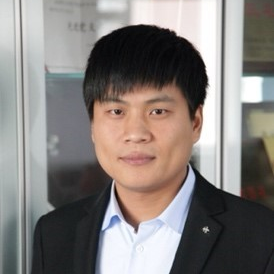Industry 4.0 Digital Transformation for Intelligent Construction, Operation and Maintenance
A special issue of Sustainability (ISSN 2071-1050). This special issue belongs to the section "Environmental Sustainability and Applications".
Deadline for manuscript submissions: closed (22 August 2023) | Viewed by 10091
Special Issue Editors
Interests: digital twins; intelligent construction, operation and maintenance; artificial intelligence; BIM
Special Issues, Collections and Topics in MDPI journals
Interests: steel structures; prefabricated construction; BIM; construction management
Interests: composite structure; artificial intelligence; prefabricated construction; construction management
Interests: structural engineering; sustainable construction materials (recycled concrete, FRP); novel structural systems (glass structures, precast concrete cross wall structures); façade systems (energy efficient glazing systems, safety monitoring and maintenance of façades in service); off-site construction; smart construction and maintenance; artificial intelligence (AI) in civil engineering; digital twins
Special Issue Information
Dear Colleagues,
Industry 4.0 concepts and technologies aim to characterize and promote the digital transformation in the industrial world. Unfortunately, as the biggest global industry sector, the AEC industry has become digitally lagging compared to other industry sectors. Both academics and practitioners have recognized the demand for the digital transformation of the AEC industry. Hence, intelligent construction, operation and maintenance (CO&M) is crucial to support the digital transformation of the AEC industry. How to use emerging information technologies and concepts to enable intelligent CO&M processes is an important question to ensure the safety and efficiency of the AEC industry.
Therefore, the overall goal of this Special Issue is to gather original contributions and review articles focusing on intelligent construction, operation and maintenance (CO&M) aspects. In this Special Issue, original research articles and reviews are welcome. Research areas may include (but are not limited to) the following:
- Digital twins;
- Automation in construction;
- Construction management;
- Intelligent operation and maintenance;
- Industry 4.0;
- Artificial intelligence;
- Building information modelling (BIM);
- Augmented reality (AR)/virtual reality (VR)/mixed reality (MR);
- Green construction.
We look forward to receiving your contributions.
Dr. Zhansheng Liu
Dr. Wentao Qiao
Prof. Dr. Feiyu Liao
Prof. Dr. Jian Yang
Guest Editors
Manuscript Submission Information
Manuscripts should be submitted online at www.mdpi.com by registering and logging in to this website. Once you are registered, click here to go to the submission form. Manuscripts can be submitted until the deadline. All submissions that pass pre-check are peer-reviewed. Accepted papers will be published continuously in the journal (as soon as accepted) and will be listed together on the special issue website. Research articles, review articles as well as short communications are invited. For planned papers, a title and short abstract (about 100 words) can be sent to the Editorial Office for announcement on this website.
Submitted manuscripts should not have been published previously, nor be under consideration for publication elsewhere (except conference proceedings papers). All manuscripts are thoroughly refereed through a single-blind peer-review process. A guide for authors and other relevant information for submission of manuscripts is available on the Instructions for Authors page. Sustainability is an international peer-reviewed open access semimonthly journal published by MDPI.
Please visit the Instructions for Authors page before submitting a manuscript. The Article Processing Charge (APC) for publication in this open access journal is 2400 CHF (Swiss Francs). Submitted papers should be well formatted and use good English. Authors may use MDPI's English editing service prior to publication or during author revisions.
Keywords
- intelligent construction
- operation and maintenance
- digital twins








